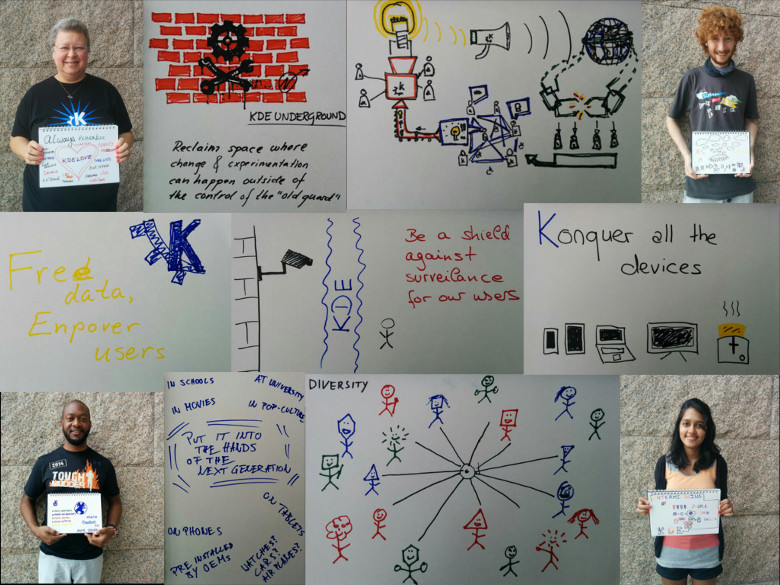Since the KDE Advisory Board was created in 2016, we have been encouraging more and more organizations to join it, either as patrons or as non-profit partner organizations. With Ubuntu (via Canonical) and openSUSE (via SUSE) we already had two popular Linux distributions represented in the Advisory board. They are now joined by one of the biggest and oldest purely community-driven distributions: Debian.
Read MoreThomaspfeiffer
KDE and Slimbook Release a Laptop for KDE Fans
Today KDE is proud to announce the immediate availability of the KDE Slimbook, a KDE-branded laptop that comes pre-installed with Plasma and KDE Applications (running on Linux) and is assured to work with our software as smoothly as possible.
Read MoreKDE releases Kirigami UI 2.0

Today, KDE announces the public release of Kirigami UI 2.0 !
All issues that were identified during the ten days of beta testing have been fixed, and Kirigami 2.0 is deemed ready for general use.
Read MoreKDE releases beta of Kirigami UI 2.0

Today, KDE announces the beta release of Kirigami UI 2.0.
Soon after the initial release of Kirigami UI, KDE's framework for convergent (mobile and desktop) user interfaces, its main developer Marco Martin started porting it from Qt Quick Controls 1 to Qt Quick Controls 2, the next generation of Qt's ready-made standard controls for Qt Quick-based user interfaces. Since QQC 2 offers a much more extended range of controls than QQC 1, the port allowed the reduction of Kirigami's own code, while improving stability and performance. Kirigami 2 is kept as close to QQC 2's API as possible in order to extend it seamlessly.
Read MoreAnnouncing the KDE Advisory Board

KDE's Kirigami UI Framework Gets its First Public Release

KDE has a long tradition of providing user interface components beyond the basics that are offered in Qt itself. With KDE Frameworks 5, these have become more easily available for Qt developers who are not part of KDE. Now, with KDE’s focus expanding beyond desktop and laptop computers into the mobile and embedded sector, our QWidgets-based components alone are not sufficient anymore. In order to allow developers to easily create Qt-based applications that run on any major mobile or desktop operating system (including our very own existing Plasma Desktop and upcoming Plasma Mobile, of course), we have created a framework that extends Qt Quick Controls: Welcome Kirigami!
Read MoreKDE Doing a Survey for Input on our Mission
As already hinted at in the article about KDE's Vision, the next step in setting our path into the future is defining KDE's Mission statement. Right after our Vision was published, a group of people started drafting a Mission statement and discussing it on the kde-community mailing list.
Read MoreKDE Presents its Vision for the Future
KDE is a highly diverse community and every one of our contributors has his or her own motives, such as having fun, developing new skills and meeting nice people. However, a common desire unites all of KDE: to change the world for the better. This shared motivation, although the major driving force behind KDE, has never really been made explicit.
Read MoreKDE Proudly Presents Kirigami UI!

Kirigami UI isn't just a set of components, it's also a philosophy: It defines precise UI/UX patterns to allow developers to quickly develop intuitive and consistent apps that provide a great user experience. Some concepts are: Actions are available in two drawers and additionally through some shortcuts (buttons or swipes); actions and options are distinguished into global ones and contextual ones, put in two different drawers in the opposite vertical sides of the screen; app's content is organized in pages that you can browse through with horizontal swipes. The Kirigami Components for smartphones are optimized to allow easy navigation and interaction with just one hand, making it ideal for using applications casually "on the move". Kirigami UI is not only for smartphone applications, however: It will allow to create convergent applications, which are not simply the exact same user interface scaled to different sizes, but morphing between optimized interfaces based on the input method and screen size, changing as the context changes (e.g. flipping over a convertible, docking a phone). Another important concept is non-invasive pop-ups to undo an action, rather than confirmation dialogs.
Read More

